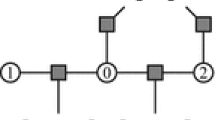Abstract
Recently, there has been increasing interest in Markovrandom field (MRF) modeling for solving a variety of computer visionproblems formulated in terms of the maximum a posteriori(MAP) probability. When the label set is discrete, such as in imagesegmentation and matching, the minimization is combinatorial. Theobjective of this paper is twofold: Firstly, we propose to use thecontinuous relaxation labeling (RL) as an alternative approach forthe minimization. The motivation is that it provides a goodcompromise between the solution quality and the computational cost.We show how the original combinatorial optimization can be convertedinto a form suitable for continuous RL. Secondly, we compare variousminimization algorithms, namely, the RL algorithms proposed byRosenfeld et al., and by Hummel and Zucker, the mean field annealing ofPeterson and Soderberg, simulated annealing of Kirkpatrick, theiterative conditional modes (ICM) of Besag and an annealing versionof ICM proposed in this paper. The comparisons are in terms of theminimized energy value (i.e., the solution quality), the requirednumber of iterations (i.e., the computational cost), and also thedependence of each algorithm on heuristics.
Similar content being viewed by others
References
E.H.L. Aarts, Simulated Annealing and Boltzmann Machines: A Stochastic Approach to Combinatorial Optimization and Neural Computing, Wiley, 1989.
J. Besag, “On the statistical analysis of dirty pictures,” (with discussions), Journal of the Royal Statistical Society, Series B, Vol. 48, pp. 259–302, 1986.
A. Blake and A. Zisserman, Visual Reconstruction, MIT Press: Cambridge, MA, 1987.
H.I. Bozma and J.S. Duncan, “Admissibility of constraint functions in relaxation labeling,” in Proceedings of Second International Conference on Computer Vision, Florida, 1988, pp. 328–332.
I.M. Elfadel, “From Random Fields to Networks,” Ph.D. thesis, Department of Mechanical Engineering, 1993.
O.D. Faugeras and M. Berthod, “Improving consistency and reducing ambiguity in stochastic labeling: An optimization approach,” IEEE Transactions on Pattern Analysis and Machine Intelligence, Vol. 3, pp. 412–423, 1981.
O.D. Faugeras and K. Price, “Semantic description of aerial images using stochastic labeling,” IEEE Transactions on Pattern Analysis and Machine Intelligence, Vol. 3, pp. 638–642, 1981.
S. Geman and D. Geman, “Stochastic relaxation, Gibbs distribution and the Bayesian restoration of images,” IEEE Transactions on Pattern Analysis and Machine Intelligence, Vol. 6, No.6, pp. 721–741, 1984.
R.M. Haralick, “Decision making in context,” IEEE Transactions on Pattern Analysis and Machine Intelligence,Vol. 5, No.4, pp. 417–428, 1983.
R.A. Hummel and S.W. Zucker, “On the foundations of relaxation labeling process,” IEEE Transactions on Pattern Analysis and Machine Intelligence, Vol. 5, No.3, pp. 267–286, 1983.
S. Kirkpatrick, C.D. Gellatt, and M.P. Vecchi, “Optimization by simulated annealing,” Science, Vol. 220, pp. 671–680, 1983.
J. Kittler, W.J. Christmas, and M. Petrou, “Probabilistic relaxation for matching problem in computer vision,” in Proceedings of Fourth International Conference on Computer Vision, Germany, 1993, pp. 666–673.
S.Z. Li, “Towards 3D vision from range images: An optimization framework and parallel networks,” CVGIP: Image Understanding, Vol. 55, No.3, pp. 231–260, 1992.
S.Z. Li, “Matching: Invariant to translations, rotations and scale changes,” Pattern Recognition, Vol. 25, No.6, pp. 583–594, 1992.
S.Z. Li, “A Markov random field model for object matching under contextual constraints,” in Proceedings of IEEE Computer Society Conference on Computer Vision and Pattern Recognition, Seattle, Washington, 1994, pp. 866–869.
S.Z. Li, Markov Random Field Modeling in Computer Vision, Springer-Verlag, 1995.
S.Z. Li, “Relaxation labeling using Lagrange multipliers and Hopfield network,” in Proceedings of IEEE International Conference on Image Processing, Washington, D.C., 1995, pp. 23–26.
S.Z. Li, H. Wang, and M. Petrou, “Relaxation labeling of Markov random fields,” in Proceedings of International Conference Pattern Recognition, Jerusalem, Israel, 1994, Vol. 1, pp. 488–492.
J.L. Marroquin, “Probabilistic Solution of Inverse Problems,” Ph.D. Thesis, MIT AI Lab, 1985.
B.M. McMillin and L.M. Ni, “A reliable parallel algorithm for relaxation labeling,” in Parallel Processing for Computer Vision and Display, P.M. Dew, R.A. Earnshaw, and T.R. Heywood (Eds.), Addison-Wesley, pp. 190–209, 1989.
N. Metropolis et al., “Equations of state calculations by fast computational machine,” Journal of Chemical Physics, Vol. 21, pp. 1087–1091, 1953.
J. Mohammed, R. Hummel, and S. Zucker, “A feasible direction operator for relaxation method,” IEEE Transactions on Pattern Analysis and Machine Intelligence, Vol. 5, No.3, pp. 330–332, 1983.
J.L. Mundy and A. Zisserman (Eds.), Geometric Invariants in Computer Vision, MIT Press: Cambridge, MA, 1992.
D.P. O'Leary and S. Peleg, “Analysis of relaxation processes: The two-node two label case,” IEEE Transactions on Systems, Man and Cybernetics, Vol. SMC-13, No.4, pp. 618–623, 1983.
S. Peleg, “A new probability relaxation scheme,” IEEE Transactions on Pattern Analysis and Machine Intelligence, Vol. 8, pp. 362–369, 1980.
S. Peleg and R.A. Rosenfeld, “Determining compatibility coefficients for curve enhancement relaxation processes,” IEEE Transactions on Systems, Man and Cybernetics, Vol. 8, pp. 548–554, 1978.
C. Peterson and B. Soderberg, “A new method for mapping optimization problems onto neural networks,” International Journal of Neural Systems, Vol. 1, No.1, pp. 3–22, 1989.
K.E. Price, “Relaxation matching techniques—A comparison,” IEEE Transactions on Pattern Analysis and Machine Intelligence, Vol. 7, No.5, pp. 617–623, 1985.
S.A. Rosen, “The gradient projection method for nonlinear programming—Part I: Linear constraints,” Journal of the Society for Industrial and Applied Mathematics, Vol. 8, No.1, pp. 181–217, 1960.
A. Rosenfeld, R. Hummel, and S. Zucker, “Scene labeling by relaxation operations,” IEEE Transactions on Systems, Man and Cybernetics, Vol. 6, pp. 420–433, 1976.
P.D. Simic, “Statisrical mechanics as the underlying theory of 'elastic' and 'neural' optimization,” Network,Vol. 1, pp. 89–103, 1990.
E. Wasserstrom, “Numerical solutions by the continuition method,” SIAM Review, Vol. 15, pp. 89–119, 1973.
A.L. Yullie, “Generalized deformable models, statistical physics and matching problems,” Neural Computation, Vol. 2, pp. 1–24, 1990.
Author information
Authors and Affiliations
Rights and permissions
About this article
Cite this article
Li, S.Z., Wang, H., Chan, K.L. et al. Minimization of MRF Energy with Relaxation Labeling. Journal of Mathematical Imaging and Vision 7, 149–161 (1997). https://doi.org/10.1023/A:1008253505953
Issue Date:
DOI: https://doi.org/10.1023/A:1008253505953




